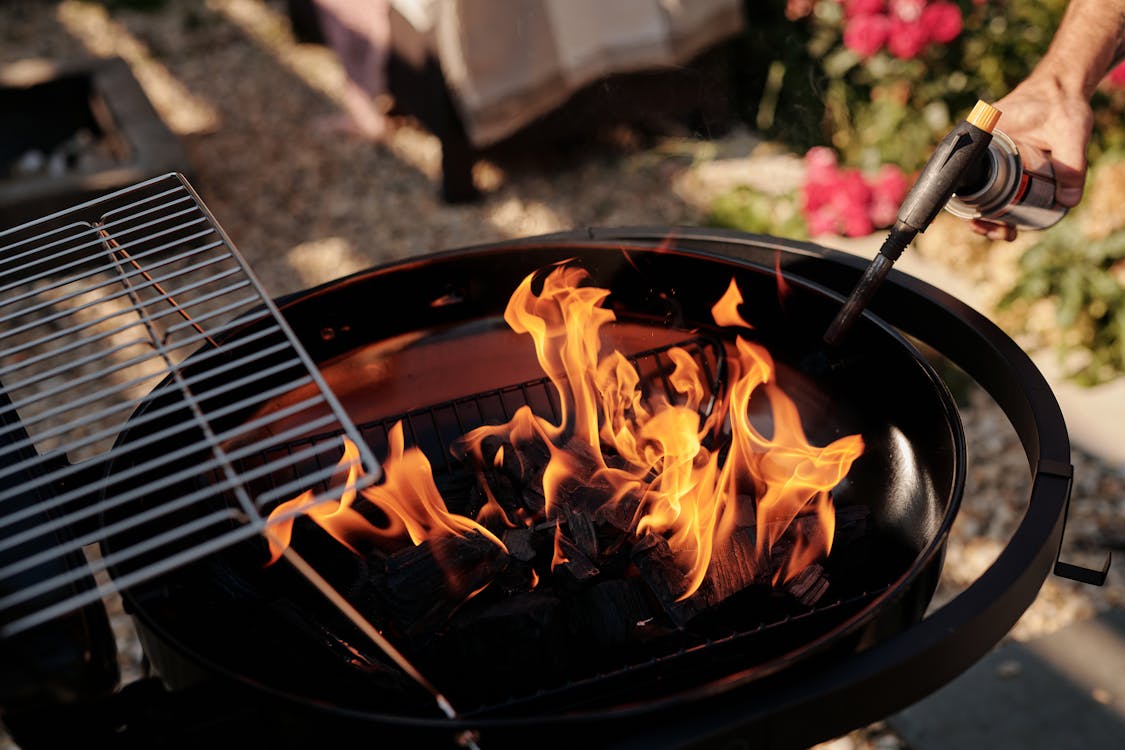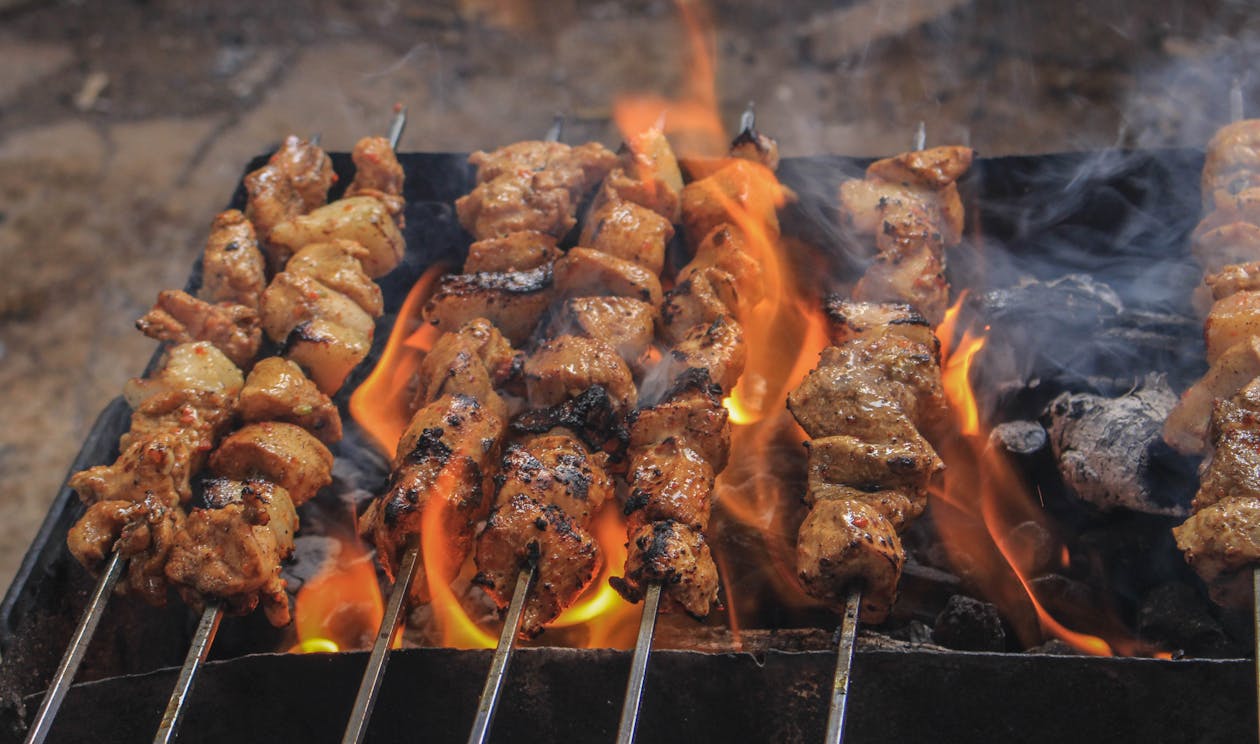Grilling isn’t just a Summer ritual for sunburned dads- it’s for anyone who loves spending their Summer outside while enjoying crispy, smoky sear on their fruits, vegetables, and meats. But how to use a grill can be intimidating, even if you’re a professional home chef. There’s always something about it that feels a little risky!
Well, don’t worry! If you are a beginner at grilling, we’ve got you covered! In this guide, find out how to use a grill without any hassle:
Choose Your Grill

How to choose the right grill can be difficult, especially if you’re a beginner. There are mainly two types of grills: gas and charcoal. A gas grill is perfect when it comes to grilling for beginners. On the contrary, if you’re budget conscious and don’t want to spend much on grilling, then a charcoal grill is an ideal choice.
Because they function more like a kitchen stovetop, gas grills are more user-friendly for beginners. Plus, this grill can rapidly fire one and adjust the flames as needed. The gas grill kind of takes out a lot of the guessing for you. You just have to set the dials to the temperatures specified in the recipe, which will control the temps.
When you’re also trying to get supper on the table fast, that’s a fantastic bonus. But charcoal is the way to go if you want that traditional grill taste and look.
Prep Your Grill
Once you decide which type of grill you want to use, you can start to prep it. Ensuring your grill is clean is the first step to any great grilling experience. To remove any rust, filth, or muck from steel or cast iron (uncoated) grates, use a stiff-bristled steel brush. Also, use a nylon bristles brush to clean porcelain-coated (or other non-stick-coated) cast iron to prevent scratches.
Your grill may have a unique tool that suits the shape of the grates. If so, make use of that. Next, inspect if anything is blocking the grill’s bottom. Things may occasionally become lodged and obstruct the supply of heat. Ashes and coals from the previous grilling session may still remain inside charcoal grills, making this particularly typical.
Learn more about cleaning and maintenance of your grill.
Adjust Your Heat
If you use a charcoal grill, adjust your temperature zones by stacking fewer coals on one end for lower heat and more on the other for higher heat. It isn’t easy to understand how much charcoal to use, but with practice, you’ll get the idea easily.
Also, you can adjust your heat by starting more coal in a chimney and then pouring it on top of the coals when you want higher heat. You can move your food on the grill to cook it at various heat settings once you’ve established your heat zones.
In order to achieve the crave-worthy charred portions, begin the cooking process on a lower heat before increasing it to achieve completely cooked meats like chicken. Start at a higher heat portion of the grill if you’re searing red meat or fish you don’t want to cook fully.
You may place an oven thermometer on your grill to get a sense of how hot it is if you want to be especially accurate or if you’re following a recipe that lists temperatures.
Embrace Ease
For beginners who want to know how to use a grill, the one thing to keep in mind is that you do not have to do everything the hard way. Instead, embrace the ease and do things in a way that is comfortable for you.
Use pre-marinated meats, quick-light charcoal, and lighter cubes if you want to eliminate a time-consuming or tricky step. When it comes to grilling, tools are the easiest way!
Grilling tools have long handles that make them safer to use over hot flames. A grill brush, a grill spatula, and grill tongs are must-haves. There is no turning back from overcooking chicken because there is nothing worse than not knowing when to remove it from the grill. In such a case, grilling tools work the best, and you don’t have to worry about anything.
Stay Safe
If you’re a beginner or a professional, it’s essential to stay safe at all times. So before lighting up your grill, make sure to read your grill’s manual. It contains all the information regarding where and how to set it up freely. For instance, you have to avoid setting up your grill under a patio roof or against the side of the house.
It’s best to set up your grill in the open air so there will be much space for the air to circulate and the heat to disperse itself.
Cool Down Your Grill and Clean Up

Once you’re done cooking your meal, you should clean the grill and put it back where you found it (or better). You must first burn off cooked-on sauce or food in order to accomplish that. Then, turn the heat to a higher setting and let it “cook” for about 15 minutes with the lid down.
After those fifteen minutes are up, shut off the grill. Plug it out if you’re dealing with electricity. Close the relevant valves if you’re dealing with gas or propane to ensure the unit isn’t receiving any gas flow. After that, allow the grill to cool. Repeat the cleaning and seasoning procedures after the grill has cooled (remember that porcelain or coated grates don’t require seasoning).
Grilling for Beginners
So, that’s how to use a grill! Let’s look at some of the grilling tips for beginners so that you can cook your delicious foods without facing any serious issues.
Identify Hot Spots On Your Pallet or Gas Grill
Adjust your gas grill to a medium temperature. On the grate, place pieces of cheap loaf-style bread. Flip them over when they start to toast. The color of the slices will probably vary from slice to slice; some slices may even be fairly dark, indicating hot regions on your grill. To help you remember the pattern, take a picture.
Make Sure That You Don’t Run Out Of Fuel
Beginners learning how to use a grill mostly make the mistake of running out of fuel during a smoke or grill session. Depending on which type of equipment you’re using, always have extra fuel. For instance- a bag of pallets or charcoal, chunks, wood chips, or an extra tank of propane on hand.
Pour a small bucket of extremely hot tap water down the side of the propane tank to check the former’s level, then run your hand around the outside: The propane level is indicated by the temperature at which the metal changes from warm to cool.
Fish Without Fear
The grill grate is renowned for adhering to fish. Cook it in an oiled extensible mesh grill basket, on a bed of lemon slices, or on a cedar board to prevent problems. Ensure the grill grate is clean and well-oiled before cooking directly on it. Next, turn the fish using a spatula with a thin blade. Pick fish with firm flesh, such as salmon, halibut, monkfish, swordfish, etc.
Always Go For The Dark Side
When purchasing chicken, opt for the dark flesh—legs or thighs—as these cuts taste more than breast meat but maintain moisture when placed on the grill’s high, dry heat. (They also cost less.) The chicken should be indirectly grilled until almost fully done, then finished over the flame to slightly sear the meat and set any sauce or glaze. Grill at higher temperatures—at least 350 degrees—for skin that is crispy.
For Perfect Kebabs

Thread meat, vegetables, or fruit separately on flat metal skewers in order to prevent components from spinning and to ensure that they are all cooked to perfection. If using bamboo, ensure that the skewers are covered as little as possible. To keep the exposed handles from burning, fold a 12- by-18-inch piece of foil into thirds like a business letter and tuck it underneath. (Pre-soaking the skewers in water doesn’t seem to make much of a difference.)
Know When It’s Done
Prime rib, brisket, and other pricey kinds of meat terrify even seasoned grillers. It’s acceptable to use a meat thermometer. In fact, having one shows that you take your smoking and grilling, as well as your guests’ health, seriously. While a digital or remote Wi-Fi-enabled thermometer will cost more, a basic instant-read meat thermometer may be purchased for less than $10. Both are wise investments.
Conclusion
Grilling can unlock a world of whole new flavors and tastes. After that, it’s just about practice, and you’ll get the hang of it faster than you think.
If you’re new to grilling, this guide will surely help in become a master of grilling delicious foods. So, start grilling and enjoy this Summer outside filled with mouth-watering meals and memories with your friends or family.
- The 9 Best BBQ Grills for Smoking Brisket - December 29, 2022
- 6 Mouth Watering Grilled Shrimp Recipes - September 16, 2022
- 6 Delicious Grilled Desserts - September 16, 2022
